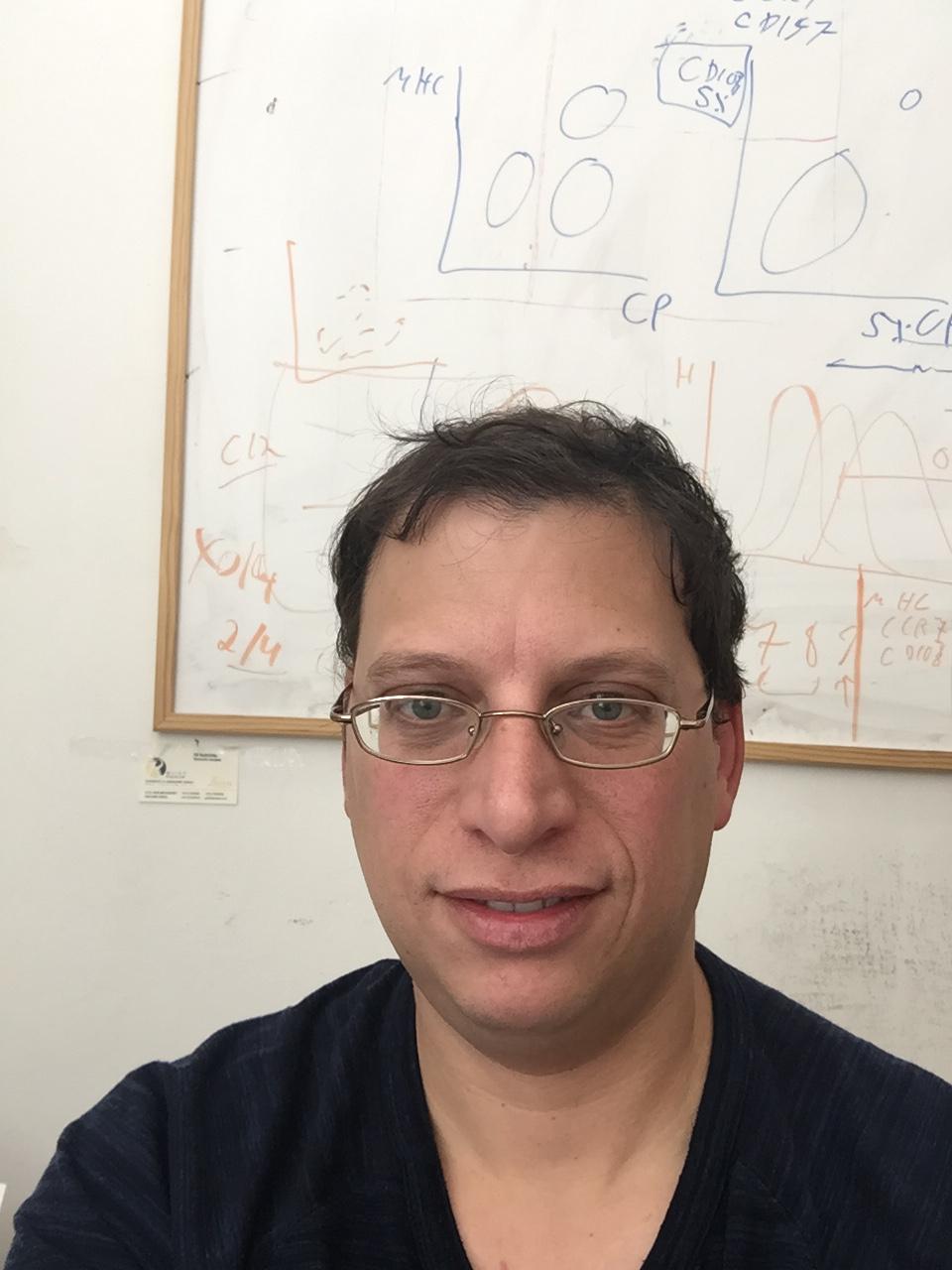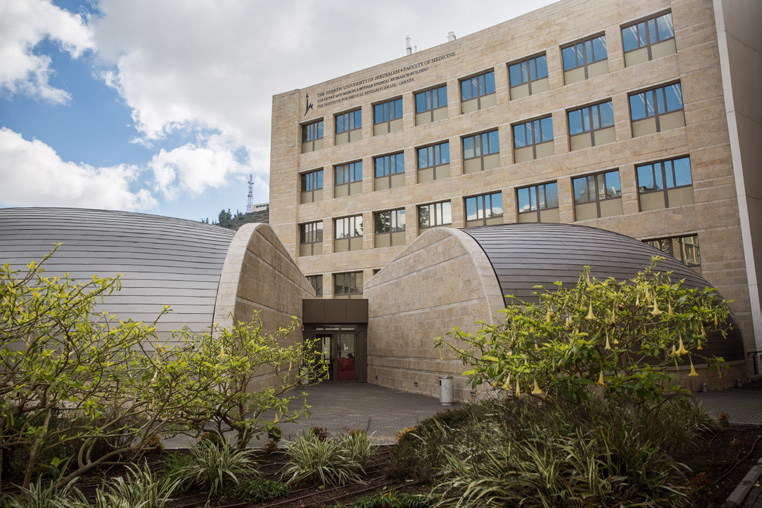
Oren Parnas, PI
Tel:+97226758152
Email: orenp@ekmd.huji.ac.il
Research Interests
The interactions between the immune system and cancer
The Parnas lab goal is to explore the effect of suppressive signals on innate immune cells, especially dendritic cells. We focus on suppressive signals that produced by cancer. Cancer escapes the immune system using several strategies including the production of signals that suppress the ability of the immune system to respond to danger. We explore:
Which suppressive signals produce by cancer? At which stage during the development of the disease, and how they affect the immune cells.
Which key genes, that expressed by immune cells, sense and transfer the suppressive signals and therefore can be targeted to block the effect of the suppressive signals.
We are using advanced genetics and genomics methods, to characterize the interactions between the immune cells and the malignant cells in ovarian cancer mouse model. It includes single cell RNA-Seq technics that enables to monitor cell type and cell state in an unbiased way and genome wide CRISPR-CAS9 screens that are useful in order to find new genes that play a role in immune regulation. We hypothesize that targeting those genes can reverse the dysfunction phenotype of the immune system in advance cancer and restore the immune system ability to fight cancer. We have already found several new genes that play a role in immune suppression and we are investigating their regulation and exploring their molecular mechanism.
In addition, we investigate the biology of herpes viruses, especially Kaposi sarcoma herpes virus that can cause skin cancer. Herpes viruses establish life-long latency in humans and cause the disease upon activation from a latent state to lytic state. We aim to find new genes that play a role in latency establishment, maintenance of latency, reactivation and lytic infection.
List of publications:
*co-corresponding authors; #co-first authors
(1) Haddad CO, Kalt I, Shovman Y, Xia L, Schlesinger Y, Sarid R, et al. Targeting the Kaposi’s sarcoma-associated herpesvirus genome with the CRISPR-Cas9 platform in latently infected cells. Virol J 2021;18(1).
(2) Kolodkin-Gal D, Roitman L, Ovadya Y, Azazmeh N, Assouline B, Schlesinger Y, et al. Senolytic elimination of Cox2-expressing senescent cells inhibits the growth of premalignant pancreatic lesions. Gut 2021.
(3) Schlesinger Y, Yosefov-Levi O, Kolodkin-Gal D, Granit RZ, Peters L, Kalifa R, et al. Single-cell transcriptomes of pancreatic preinvasive lesions and cancer reveal acinar metaplastic cells’ heterogeneity. Nat Commun 2020;11(1).
(4) Feregrino C, Sacher F, Parnas O, Tschopp P. A single-cell transcriptomic atlas of the developing chicken limb. BMC Genomics 2019;20(1).
(5) Shemesh K, Sebesta M, Pacesa M, Sau S, Bronstein A, Parnas O, et al. A structure-function analysis of the yeast Elg1 protein reveals the importance of PCNA unloading in genome stability maintenance. Nucleic Acids Res 2017;45(6):3189-3203.
(6) Dixit A, Parnas O, Li B, Chen J, Fulco CP, Jerby-Arnon L, et al. Perturb-Seq: Dissecting Molecular Circuits with Scalable Single-Cell RNA Profiling of Pooled Genetic Screens. Cell 2016;167(7):1853-1866.e17.
(7) Adamson B, Norman TM, Jost M, Cho MY, Nuñez JK, Chen Y, et al. A Multiplexed Single-Cell CRISPR Screening Platform Enables Systematic Dissection of the Unfolded Protein Response. Cell 2016;167(7):1867-1882.e21.
(8) Lee J, Moraes-Vieira PM, Castoldi A, Aryal P, Yee EU, Vickers C, et al. Branched fatty acid esters of hydroxy fatty acids (FAHFAs) protect against colitis by regulating gut innate and adaptive immune responses. J Biol Chem 2016;291(42):22207-22217.
(9) Parnas O, Jovanovic M, Eisenhaure TM, Herbst RH, Dixit A, Ye CJ, et al. A Genome-wide CRISPR Screen in Primary Immune Cells to Dissect Regulatory Networks. Cell 2015;162(3):675-686.
(10) Gazy I, Liefshitz B, Parnas O, Kupiec M. Elg1, a central player in genome stability. Mutat Res Rev Mutat Res 2015;763:267-279.
(11) Platt RJ, Chen S, Zhou Y, Yim MJ, Swiech L, Kempton HR, et al. CRISPR-Cas9 knockin mice for genome editing and cancer modeling. Cell 2014;159(2):440-455.
(12) Parnas O, Corcoran DL, Cullen BR. Analysis of the mRNA targetome of microRNAs expressed by Marek's disease virus. mBio 2014;5(1).
(13) Gazy I, Liefshitz B, Bronstein A, Parnas O, Atias N, Sharan R, et al. A genetic screen for high copy number suppressors of the synthetic lethality between elg1Δ and srs2Δ in yeast. G3 Genes Genome Genet 2013;3(5):917-926.
(14) Parnas O, Amishay R, Liefshitz B, Zipin-Roitman A, Kupiec M. Elg1, the major subunit of an alternative RFC complex, interacts with SUMO-processing proteins. Cell Cycle 2011;10(17):2894-2903.
(15) Parnas O, Kupiec M. Establishment of sister chromatid cohesion: The role of the clamp loaders. Cell Cycle 2010;9(23):4615.
(16) Parnas O, Zipin-Roitman A, Pfander B, Liefshitz B, Mazor Y, Ben-Aroya S, et al. Elg1, an alternative subunit of the RFC clamp loader, preferentially interacts with SUMOylated PCNA. EMBO J 2010;29(15):2611-2622.
(17) Parnas O, Zipin-Roitman A, Mazor Y, Liefshitz B, Ben-Aroya S, Kupiec M. The Elg1 clamp loader plays a role in sister chromatid cohesion. PLoS O







 Collaborative Investigators
Collaborative Investigators


